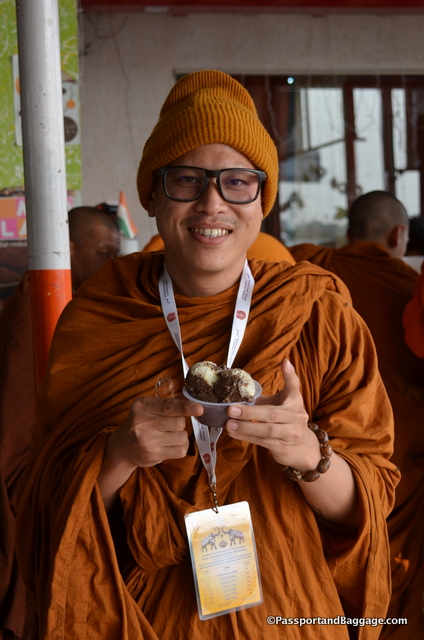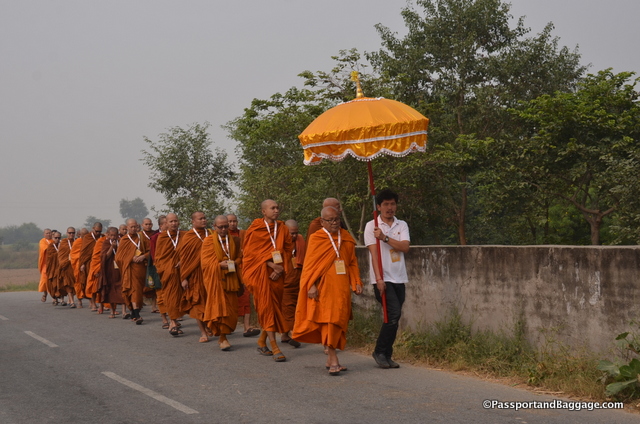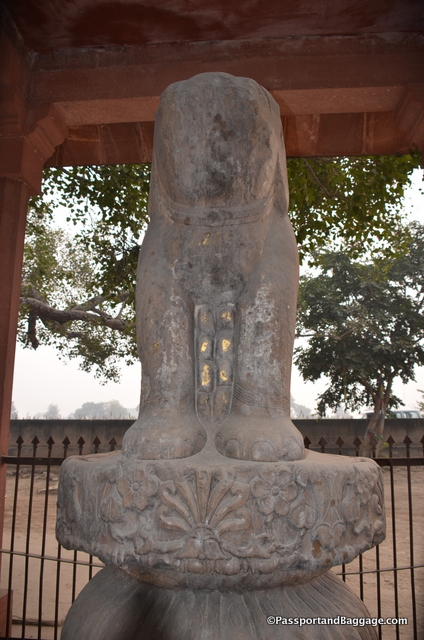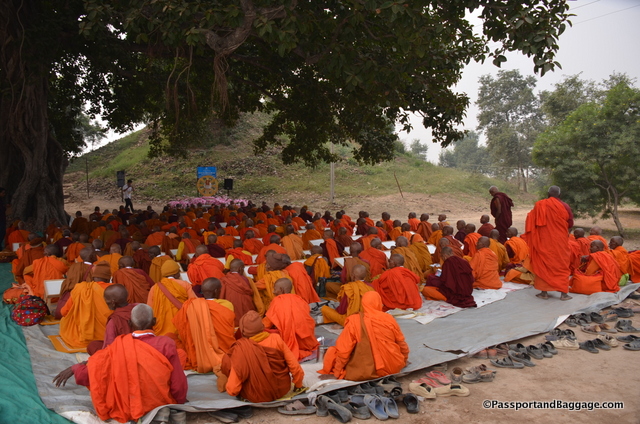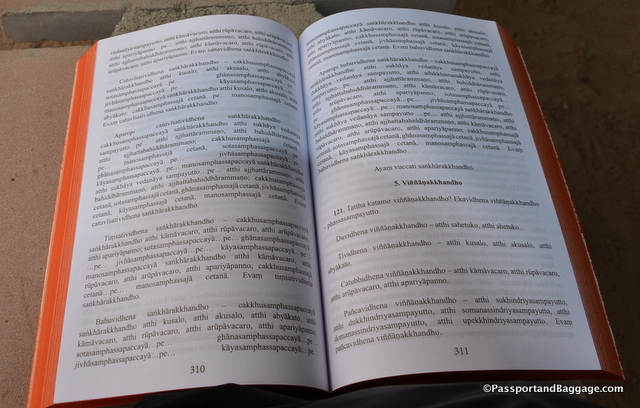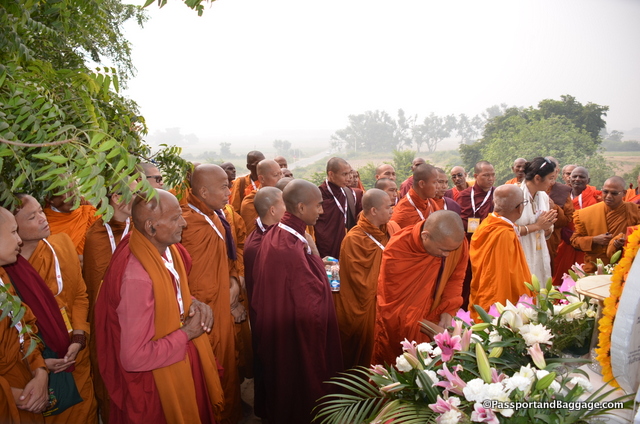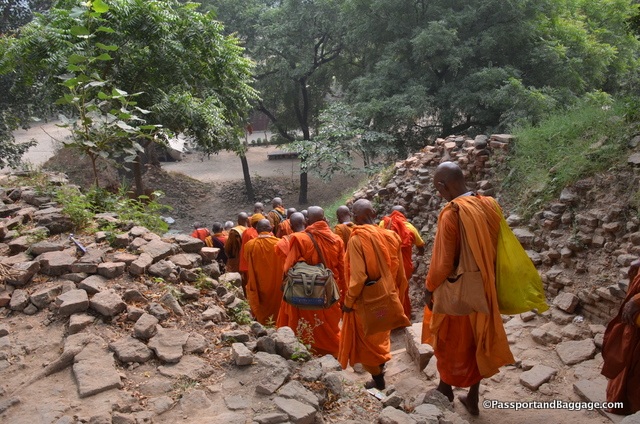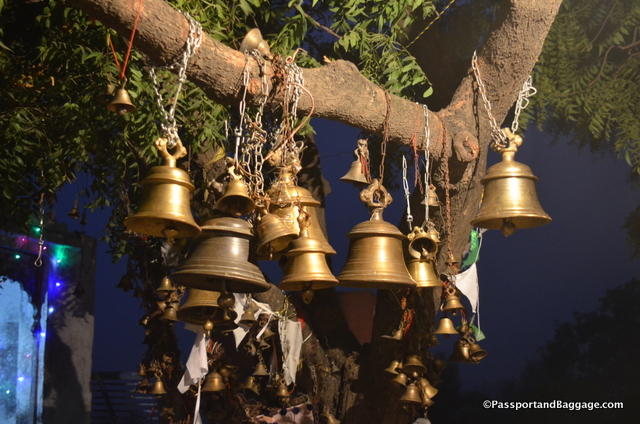November 2017
So the road between Delhi and Sankasya consists of a 6-hour bus ride.
 Bus rides through India are a patchwork quilt of an agricultural landscape dotted with villages of wonder.
Bus rides through India are a patchwork quilt of an agricultural landscape dotted with villages of wonder.
But this time the bus trip was occupied by learning the lives of some of the monks.
Remember, English is not their first language, and in some cases they are proficient, and in others, they are trying their best. The weak link is honestly my tin ear, but I hope, over the next month or so to bring each and every one to you as best as I can.
Their personalities are starting to emerge, as well as their senses of humor and joie de vivre. It is a real thrill and honor to begin to get to know each of them.
Thaw Bi Ta is 34 years old. His parents are rice farmers and his monastery is the second largest in Burma with 1200 monks, but I am sorry, I do not know the name, that is where my ear is the fault of my lack of knowledge.
Thaw Bi Ta teaches Pali, and like most of the monks with us, he is furthering his studies in Bodh Gaya, in Thaw Bi Ta’s case, at the Magano University.
He did his undergraduate work in Buddhist Studies in a school in Sri Lanka, he is in Bodh Gaya to learn English.
Day one was filled with chanting at the Sankasya Stupa. It is said that Buddha went up to the heavens to teach his mother the Dharma, as she died prior to his enlightenment. When he came down, he did so in Sankasya. There is so much more to the story, but if you want to learn that I will leave you to do so on your own.
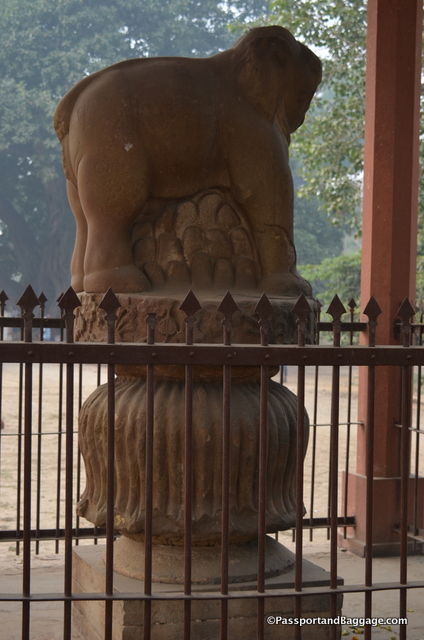 The archeology geek in me was exceptionally excited to see the remains of the Ashoka Pillar.
The archeology geek in me was exceptionally excited to see the remains of the Ashoka Pillar.
The stupa is now just a very large mound of dirt, surrounded by a small park. The park itself sits well out in the countryside, making this pilgrimage site well off the beaten path, and rarely visited judging by what I saw.
We are joined by monks from throughout India, including one that came all the way from Jaipur. These monks are considerably older, and many are illiterate, so they sit quietly and can’t really participate, but it is nice to see them all sitting and attempting to gain an understanding of what is going on. Remember the chanting is done in Pali, so it means nothing to you if you don’t know Pali. All people can follow along as we hand out books in the script of your language, and as you can see by the photo, they aren’t words you understand, but there is a delightful rhythm to the entire scene.
If you study your Buddhism you will know what the sutras say as they have been interpreted but they are chanted in Buddha’s language, which was Pali.
